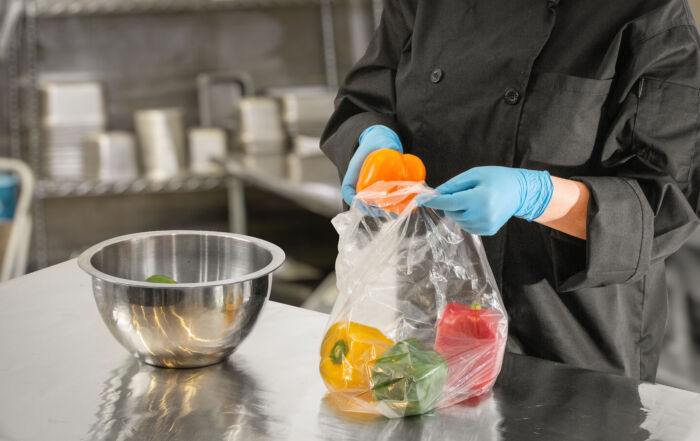Mitigating Risk in the Overall Food Safety System
In the 1990s, when I took my first food safety class, we learned about a new system called HACCP. Ok, maybe it wasn’t that new, but it sure seemed new at the time. My memory has certainly faded since that class in 1997, but I do recall our discussion in the class about how HACCP would become the norm for all foodservice establishments in the future. Fast forward almost 25 years and the only foodservice operation mandated to have a HACCP program is school foodservice – certainly not the widespread adoption that we thought might come about.
While HACCP is not required in all foodservice operations, the main idea behind HACCP is to manage and mitigate risks that you have specific to your foodservice operation. Essentially, it uses the risks we might foresee to help guide our decisions in producing food to protect public health. In other words, we implement mitigation strategies where necessary to keep food safe. A sushi restaurant will have different mitigation strategies than a fast-food operation, and both will have different strategies than a school foodservice, which mostly uses assembly-serve production. So, while HACCP isn’t nearly as widespread as we thought it might be in the 1990s, some of the most integral parts to the HACCP system have been adopted in many organizations, such as risk analysis and mitigation.
A key element the inspector is looking for is active managerial control, where the food service manager is attempting to prevent the risk of foodborne illness, rather than just reacting to it when an employee, or the inspector, points it out.
The use of a risk analysis framework is not only seen in our operations, but the science-based underpinning of risk analysis is what has driven our food safety system. Look no further than the FDA Food Code and the importance of risk factors on driving inspection standards. You will likely notice some of the key items your inspector looks for during your most recent inspection have likely changed from what they were four or five years ago. Recent inspections tend to focus on five key areas, which if you have read this blog before you have likely heard us mention. These are,
- Food from unsafe sources,
- Inadequate cooking,
- Improper holding temperatures,
- Contaminated equipment, and
- Poor personal hygiene.
Another key element the inspector is looking for is active managerial control, where the food service manager is attempting to prevent the risk of foodborne illness, rather than just reacting to it when an employee, or the inspector, points it out. Active managerial control can take many forms, and we will discuss more of these in our first blog in November.
Our next SafeBites Webinar is quickly approaching and is scheduled for November 17 at 1:00 pm. Please pencil it in and plan to join us. If you have any topics for upcoming SafeBites webinars, please feel free to reach out, I am always looking for topics of interest to those who attend. In the meantime, have a safe Halloween. Risk Nothing.
READ MORE POSTS
Preventing Norovirus in your Foodservice Operation
Norovirus is one of the leading causes of vomiting and diarrhea in the United States, [...]
Safe Handling of Leftovers in Foodservice Operations
In any foodservice operation, leftovers are inevitable. After managing a family-style restaurant, where all-you-can eat [...]
Turn your Health Inspector into your Food Safety Ally
For many foodservice operators, keeping up with evolving regulations can feel like chasing a moving [...]
Time and Temperature: Why 41°F to 135°F?
In one of my last blogs, I mentioned the temperature danger zone, or TDZ, as [...]










